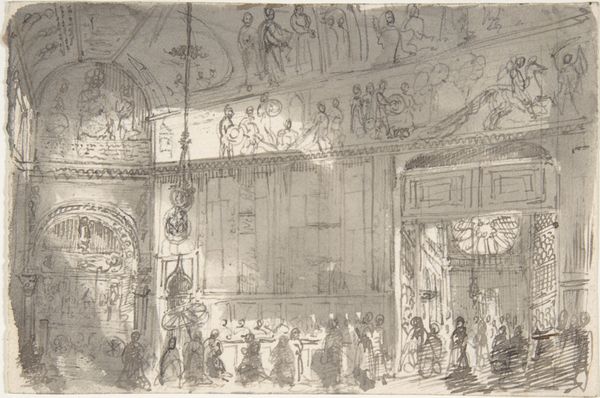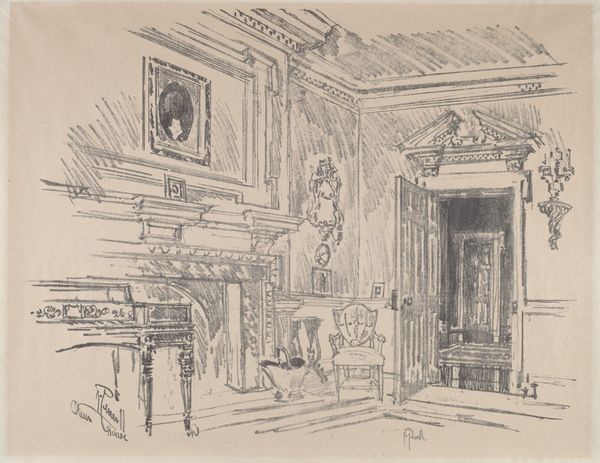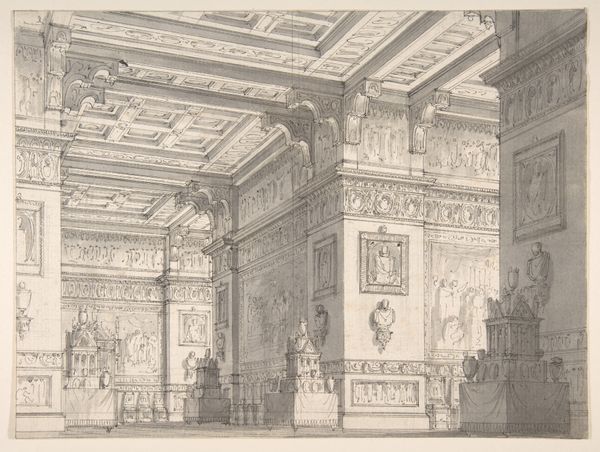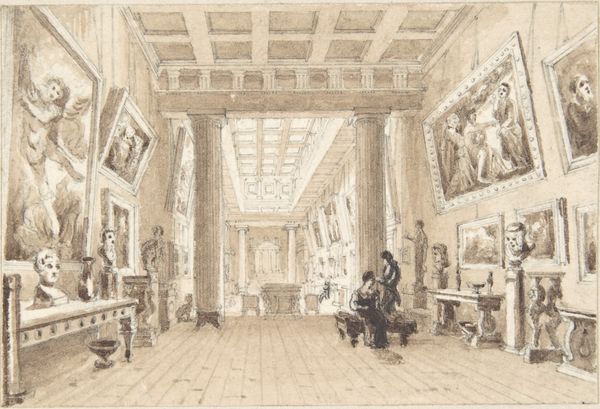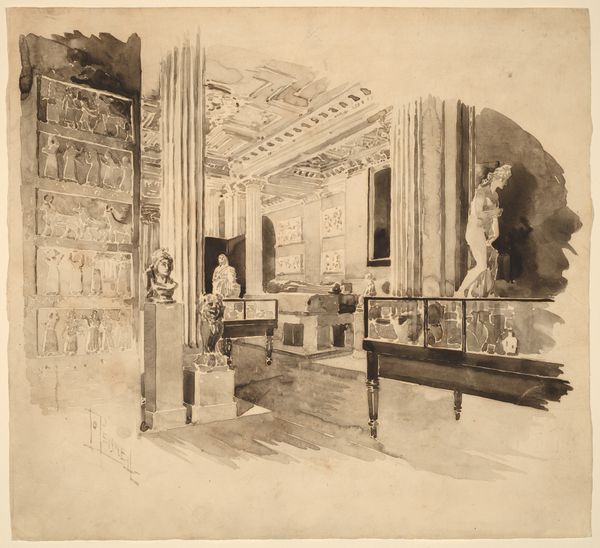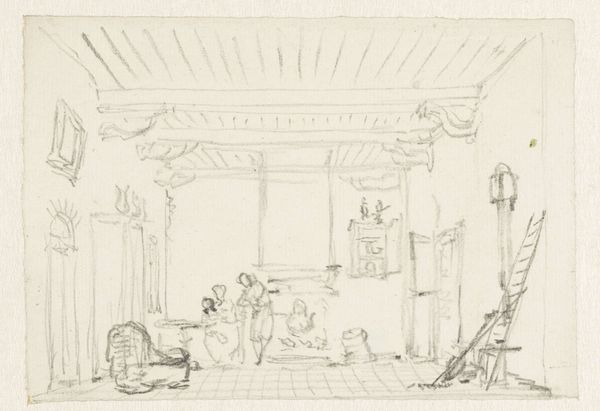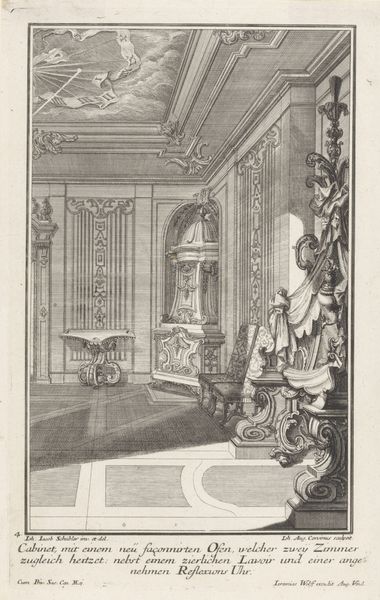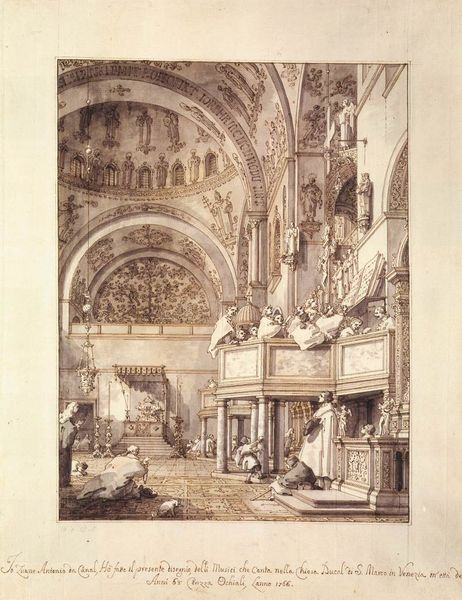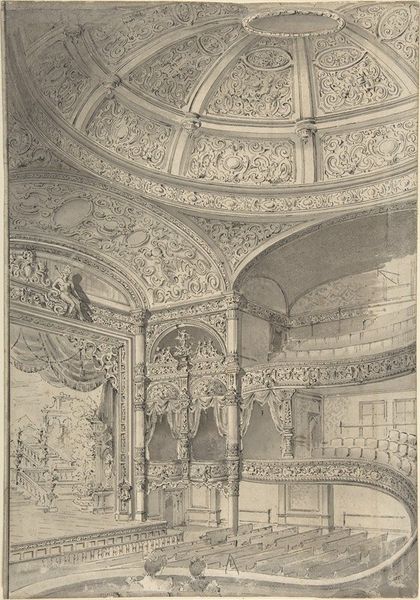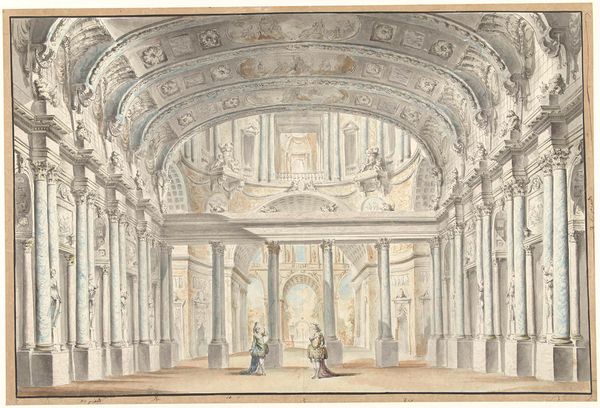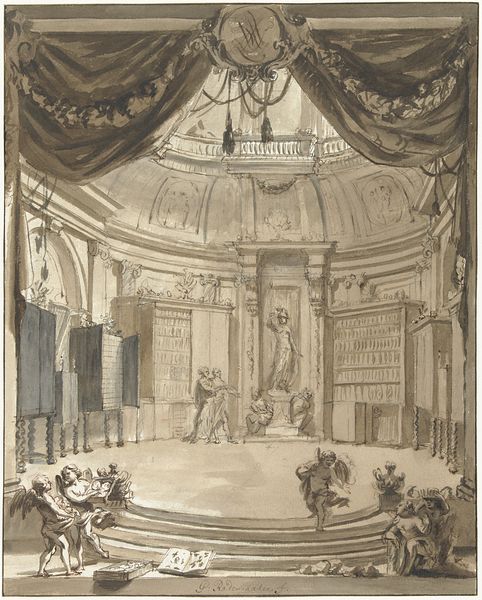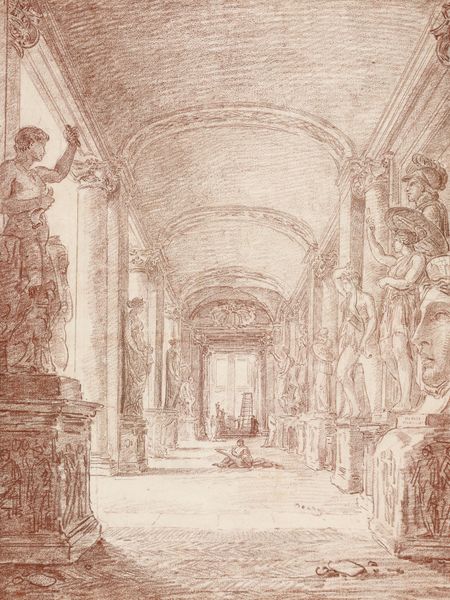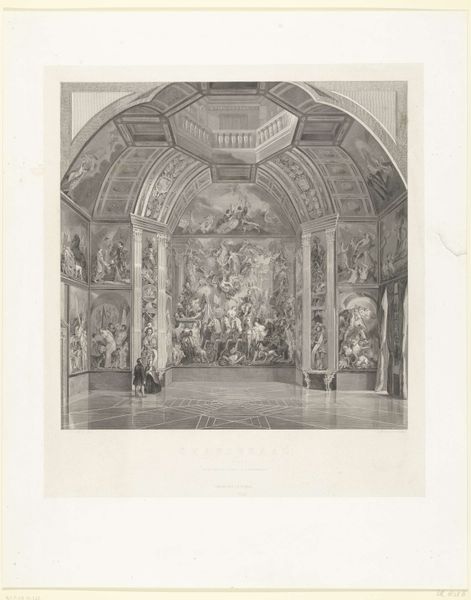
drawing, pencil
#
drawing
#
pencil sketch
#
landscape
#
ancient-egyptian-art
#
figuration
#
ancient-mediterranean
#
sketch
#
pencil
#
history-painting
#
academic-art
Copyright: Public domain
Curator: What catches my eye immediately about Vasily Polenov’s 1880 pencil drawing, "Pharaoh’s Palace," is the quality of light – the way it seems to emanate from within the stone itself. Editor: It's evocative, certainly. The ancient world is always romanticized. I'm immediately aware of the power structures visualized here: the rigid social hierarchy represented within the architecture and figure placement, typical of how ancient Egypt has been presented in art history. Curator: I agree, though I see more yearning than authority. The scene feels dreamlike, almost as if Polenov wasn’t just illustrating, but also imagining, projecting himself into the past. His architectural rendering reminds me more of stage design than historical record. Editor: That yearning comes from the 19th-century's Orientalist obsession. A Western European man romanticizing what he saw as exotic. Polenov presents us with a past laden with assumptions about race, gender, and societal roles. Consider, for example, the submissive portrayal of women, who remain uncomfortably in the margins, excluded from the center. Curator: It's difficult to unsee that colonial lens. At the same time, the sheer act of envisioning – especially through pencil, which has a raw intimacy to it – does add something unique to the established representations of Ancient Egypt. Don’t you think the texture he achieves here allows for, despite the possible prejudices, a type of empathy? Editor: It is skillful, yes. But we need to look critically. Are we really engaging with ancient Egypt, or a mirrored reflection of European fantasies imposed upon it? Even the choice of such impermanent medium—pencil—underlines its temporality. It invites viewers to interrogate the artwork not only for its visual beauty, but for the political and social commentaries woven into its creation. Curator: Understood. I must say, even now I am torn, for despite his personal historical situation as a white european, it still feels that it opens some doors in my mind and spirit. Editor: Exactly; it's that tension, between Polenov's historical context and the work's enduring resonance, that sparks meaningful dialogue. Recognizing both its artistry and inherent assumptions moves us toward a more inclusive and nuanced interpretation of art's place in history.
Comments
No comments
Be the first to comment and join the conversation on the ultimate creative platform.
